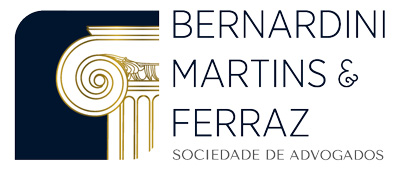The AEC, developed by TSHA, is a hands-on educational framework for Pre-K to 6th grade. It connects subjects in real-world ways, encouraging children to explore, think creatively, and solve problems. This blog will provide you with valuable information and resources to help you navigate the financial aspects of private education. The version of the bill that passed the House capped the government’s total tax credit payouts at $5 billion, but the Senate’s tax credits for private school iteration has no ceiling.
The Dawn of Semipublic Schools
These plans are established and designated for a beneficiary’s education costs. Contributions to the plan aren’t tax-deductible at the federal level, but their growth is tax-free as long as your beneficiary uses the money for educational purposes. Special education costs are accounted for during tax time as an itemized deduction for medical expenses. However, you can only deduct the portion of the total of your medical expenses that exceeds 7.5% of your adjusted gross income (AGI).
Whether your children are already in private school or you’re considering it for the future, you’re probably looking for ways to save money. This post brings together the existing private school tuition tax credit and deduction programs from the federal government to the states and more. In addition, it’s worth noting that the federal government in Canada offers various programs for family tax benefits related to education.
Scholarship Donation Tax Credits
While federal tax deductions for private school tuition are limited, many states offer their own tax benefits to help families save money. Although direct federal credits for private K-12 tuition are unavailable, families can consider alternative options. The Tax Cuts and Jobs Act of 2017 expanded the use of 529 savings plans, allowing up to $10,000 per year to be used for K-12 tuition. Earnings in a 529 plan grow tax-free, and withdrawals for qualified education expenses are not subject to federal tax, providing a tax-advantaged way to save for private school costs.
- Coverdell ESAs are tax-advantaged accounts designed to help families save for a child’s education.
- There’s no guarantee of size of the scholarship doled out to each student and whether it would even be enough to cover private school tuition.
- In turn, their tax money will go to a nonprofit instead of going to the federal government.
- “I suspect some of these blue and purple states will participate and take the free federal money, and that would mean an expansion, a geographic expansion, of access to private school choice,” Wolf said.
responses to “Tax Deductions for Private School”
If your child has a disability and needs special education, the cost of private school might qualify as a medical expense. The first major federal program that would direct public funds to private school tuition is one part of the major budget bill that narrowly passed the U.S. Though traditionally used for college savings, recent tax changes now allow parents to withdraw up to $10,000 annually from 529 plans to cover K-12 private school tuition without tax penalties. The Child and Dependent Care Credit provides a tax break for parents who pay for the cost of childcare.
What’s been the reaction to the plan?
It’s a big decision, and one of the biggest factors to consider is often the cost. Private school tuition can be a significant expense, and it’s natural to wonder if there are any ways to make it more affordable. Department of Education, which is facing a 15% cut under Trump’s proposed budget for 2026, has spent around $80 billion annually in recent years. Its two largest funding streams for K-12 schools are Title I-A for students from low-income households ($18.4 billion) and the Individuals with Disabilities Education Act, Part B, for students with disabilities ($14.2 billion). Private school consultant SoCal – Tap here to discover expert private school consulting in SoCal, guiding families to find the perfect educational fit. Before making any decisions about how to pay for your child’s private K-12 education expenses, it’s important to research all of your options thoroughly so that you can make an informed decision about which option is best for you.
- Families can withdraw up to $10,000 per child each year tax-free for K–12 tuition.
- The tax benefits of contributing to a Coverdell ESA are capped with contributions for each beneficiary limited to $2,000 a year.
- Two prominent credits, the American Opportunity Tax Credit (AOTC) and the Lifetime Learning Credit (LLC), address the costs of higher education.
- For decades, 529 plans have helped families save for future college expenses, but in 2017, the federal government passed a law allowing funds to go toward K–12 tuition expenses.
Parents who have chosen, against nearly all personal interests, to homeschool their children and who know the 20th-century legal history of the practice aren’t eager to have state funds. They know that providing an excellent education to their children takes time and energy that is far better spent on academic pursuits than on checking boxes for bureaucrats, whether employed by the state or an SGO. Congress appropriately left homeschoolers out of the expansive school choice program in the OBBBA. That’s because the school choice lobby wants everything to be a “choice” program, and most states with tax-funded programs have gone along with the all-inclusive approach.
How the Finest Private School Consultant in SoCal Helps Families Choose the Perfect School
Currently, 529 funds may be used to pay for private elementary and secondary school tuition only. Beyond tax breaks and savings plans, there are many other ways to find financial assistance for private schools. Families using 529 plans or ESAs should also keep records of contributions, withdrawals, and how funds are used. For deductions or credits tied to charitable contributions or state-specific incentives, acknowledgment letters from schools or scholarship organizations are necessary. These letters must meet IRS standards, confirming the institution’s tax-exempt status and stating that no goods or services were received in return.
Elementary and Secondary School Tuition
Until recently, with the growth of refundable tax credits, funding levels had been much higher in other school choice program options, such as Education Savings Accounts and Vouchers, compared to individual tax credits and deductions. Our School Choice in America Dashboard can help you see which programs you are eligible for in your state. The programs are popular too, as every year, hundreds of thousands of taxpayers in these states claim credits on qualified expenses they made for their child’s education. Currently, only Oklahoma and Idaho have created these programs that afford significant customization for each student’s needs, but they should be applauded. For help with private schools at the college and higher-education level, you can also look into tax credits, such as the American Opportunity Tax Credit, which provides up to $2,500 per year in tax credits for qualified education expenses. And don’t forget about the lifetime learning credit, which offers a credit of up to $2,000 per year for post-secondary education expenses.
Special needs students may be eligible for tax breaks for their private school tuition expenses. The federal government recognizes that special education can be costly and allows parents to claim deductions or credits to help offset these expenses. This assistance is aimed at ensuring that eligible students with special needs receive the appropriate education and support they require. Exploring potential tax benefits related to private school tuition can be a complex endeavor for parents seeking financial relief. With rising education costs, understanding tax deductions and credits becomes increasingly important.
With an annual contribution limit of $2,000, Coverdell ESAs allow tax-free withdrawals for qualified educational expenses, including private school tuition for elementary and secondary students. The American Opportunity Tax Credit is a tax credit available to pay for the cost of attending college for students. The credit generally offers greater tax savings than other education-related tax benefits since it reduces the tax you owe on a dollar-for-dollar basis and a portion of it can be refundable. However, you can’t use this credit to offset costs related to K-12 education. Roza at the Edunomics Lab said the scholarship money is “new money” because it is a new source of revenue, from people’s income taxes. Knight argues that this isn’t just free or new money — it is still federal dollars taken away from some other federal program and instead going mostly to private schools.
An SGO could be dedicated to scholarships for one type of student, such as low-income students, but it can’t be dedicated to support only one school, said Georgetown’s Roza. Meanwhile, most school districts — roughly 4 in 5 — already partner with foundations that raise money to help students with transportation, school supplies and basic needs. Both Enlow and Roza said they expected nonprofits and districts to partner on finding ways to tap the federal scholarship dollars as well.


Write a comment: